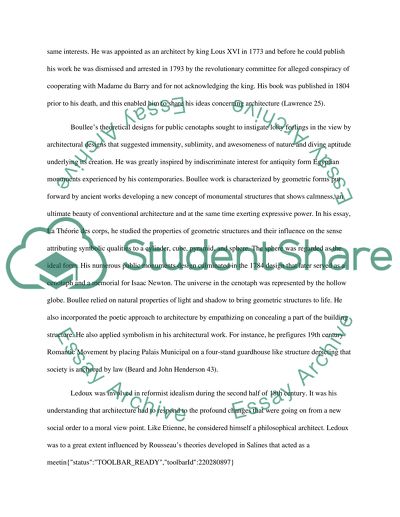Cite this document
(“How and why did the visionary architectural drawings of tienne-Louis Essay”, n.d.)
How and why did the visionary architectural drawings of tienne-Louis Essay. Retrieved from https://studentshare.org/architecture/1692672-how-and-why-did-the-visionary-architectural-drawings-of-tienne-louis-boulee-and-claude-nicolas-ledoux-challenge-the-classical-style-of-their-time
How and why did the visionary architectural drawings of tienne-Louis Essay. Retrieved from https://studentshare.org/architecture/1692672-how-and-why-did-the-visionary-architectural-drawings-of-tienne-louis-boulee-and-claude-nicolas-ledoux-challenge-the-classical-style-of-their-time
(How and Why Did the Visionary Architectural Drawings of Tienne-Louis Essay)
How and Why Did the Visionary Architectural Drawings of Tienne-Louis Essay. https://studentshare.org/architecture/1692672-how-and-why-did-the-visionary-architectural-drawings-of-tienne-louis-boulee-and-claude-nicolas-ledoux-challenge-the-classical-style-of-their-time.
How and Why Did the Visionary Architectural Drawings of Tienne-Louis Essay. https://studentshare.org/architecture/1692672-how-and-why-did-the-visionary-architectural-drawings-of-tienne-louis-boulee-and-claude-nicolas-ledoux-challenge-the-classical-style-of-their-time.
“How and Why Did the Visionary Architectural Drawings of Tienne-Louis Essay”, n.d. https://studentshare.org/architecture/1692672-how-and-why-did-the-visionary-architectural-drawings-of-tienne-louis-boulee-and-claude-nicolas-ledoux-challenge-the-classical-style-of-their-time.


